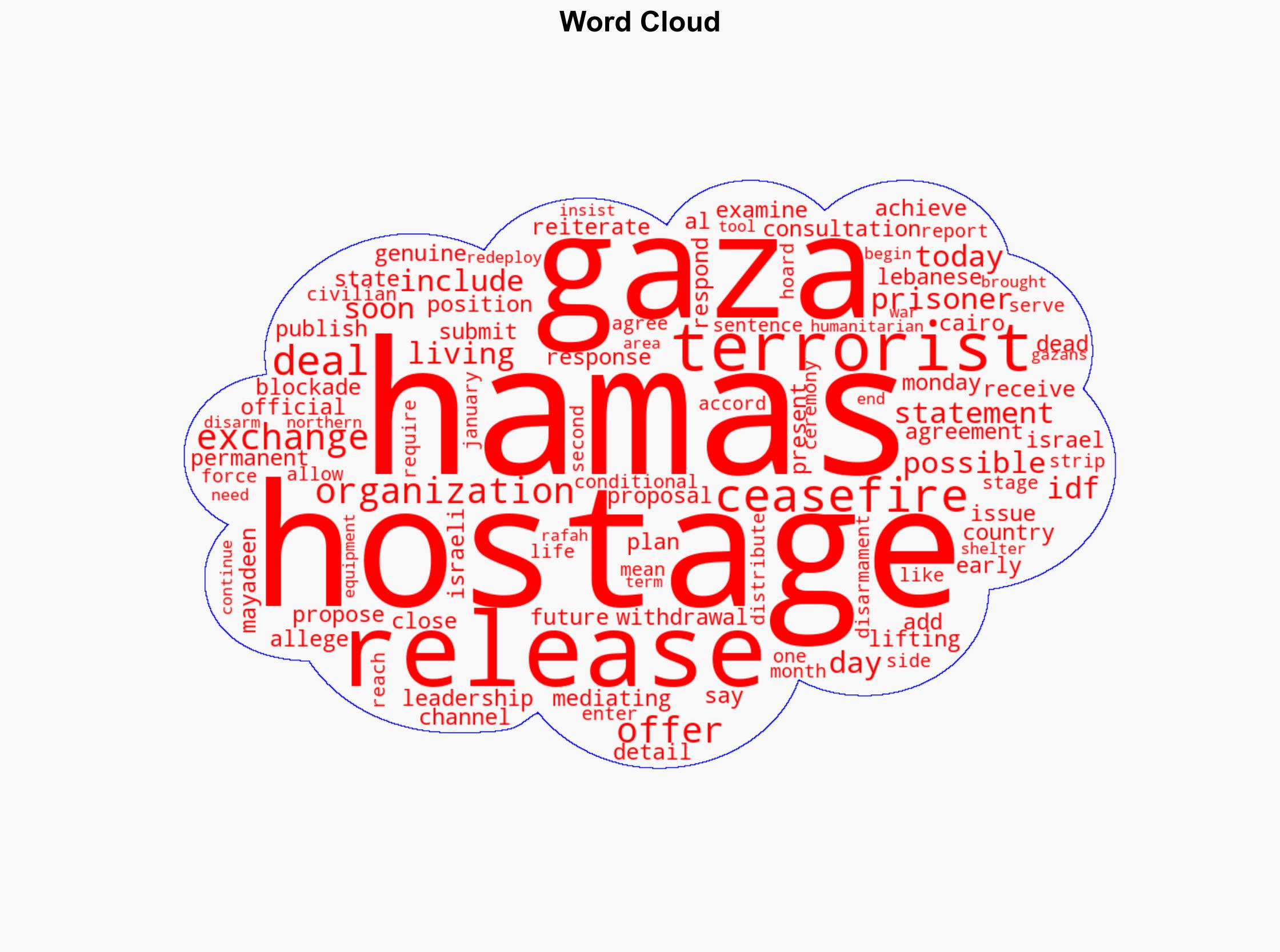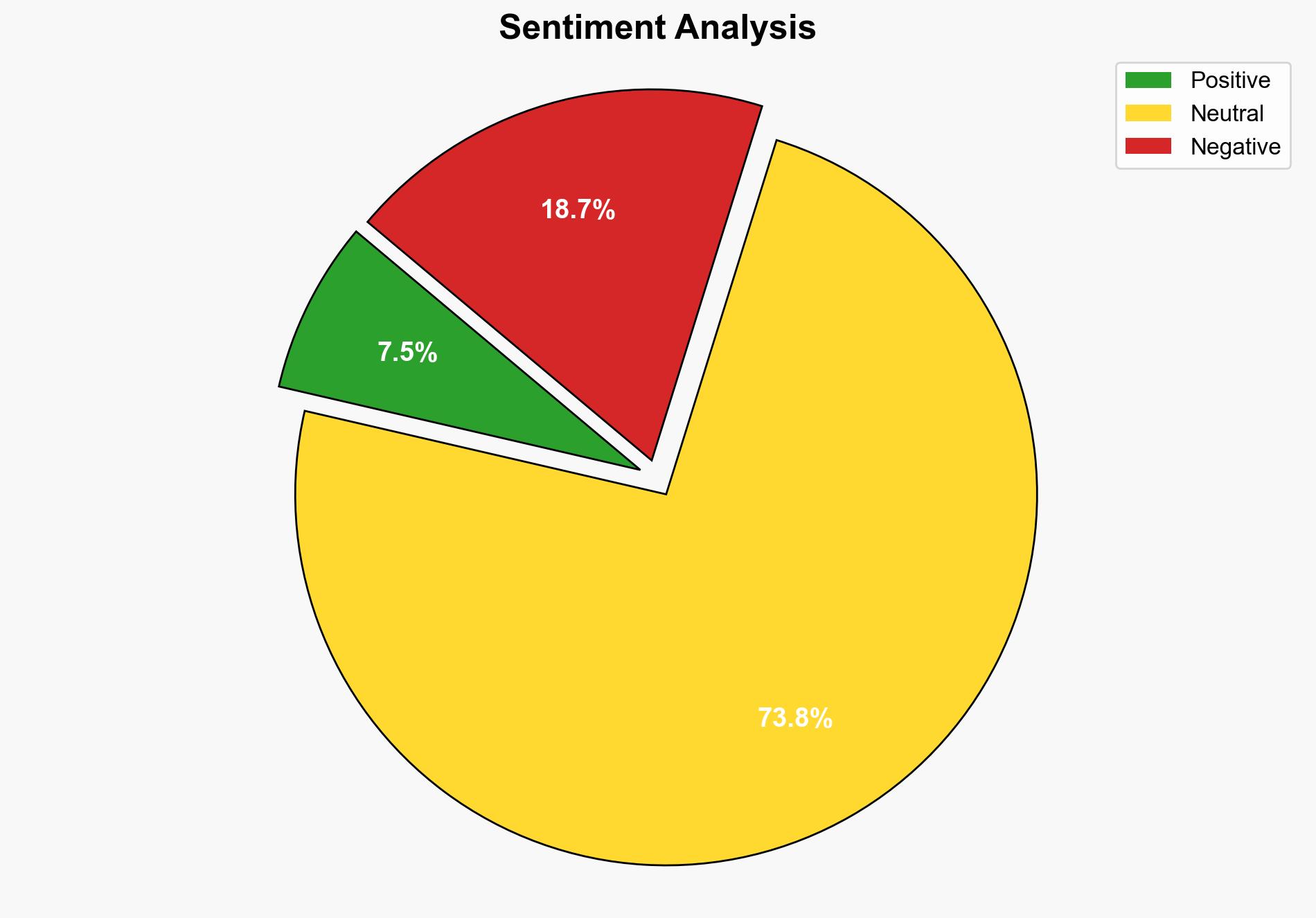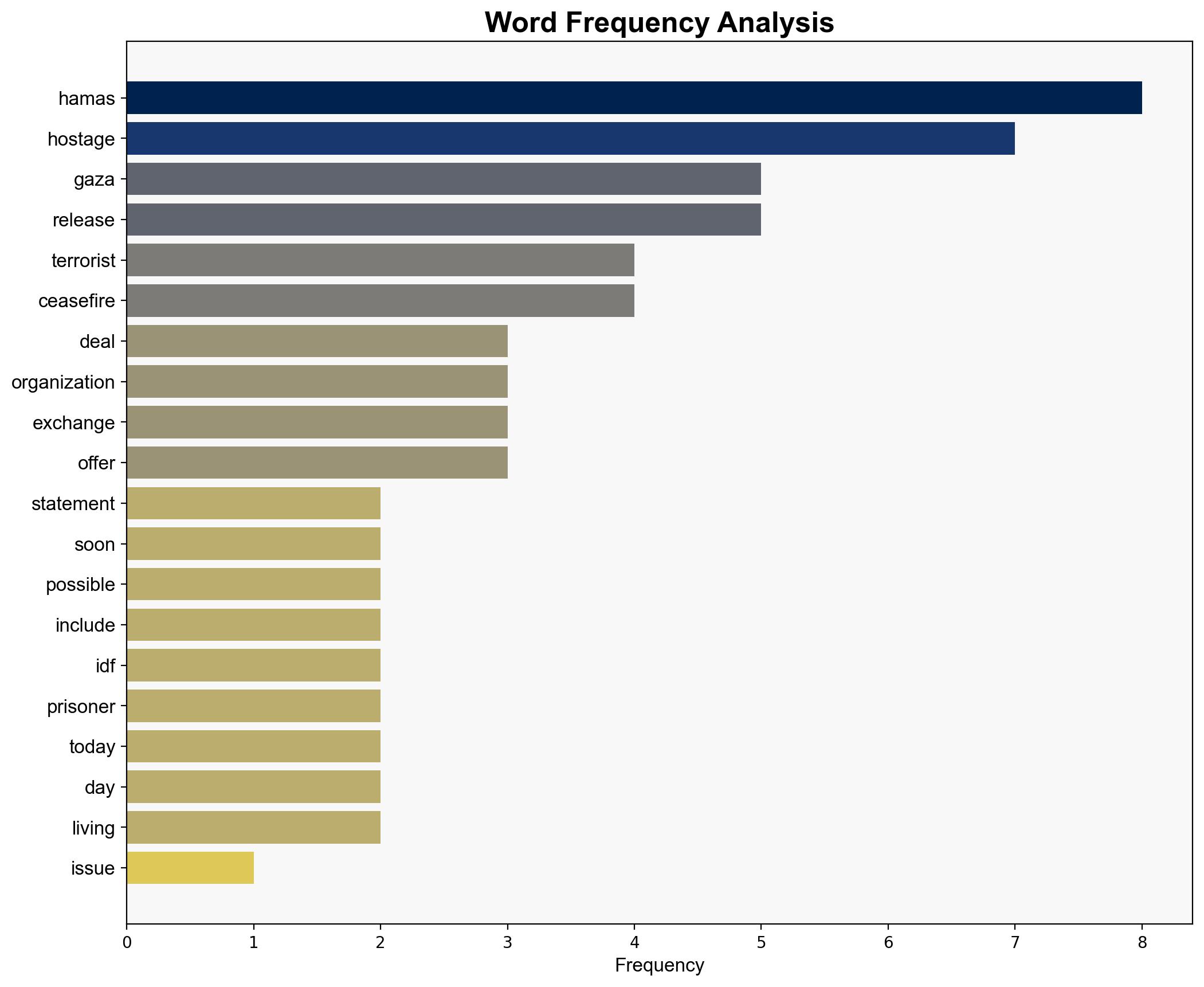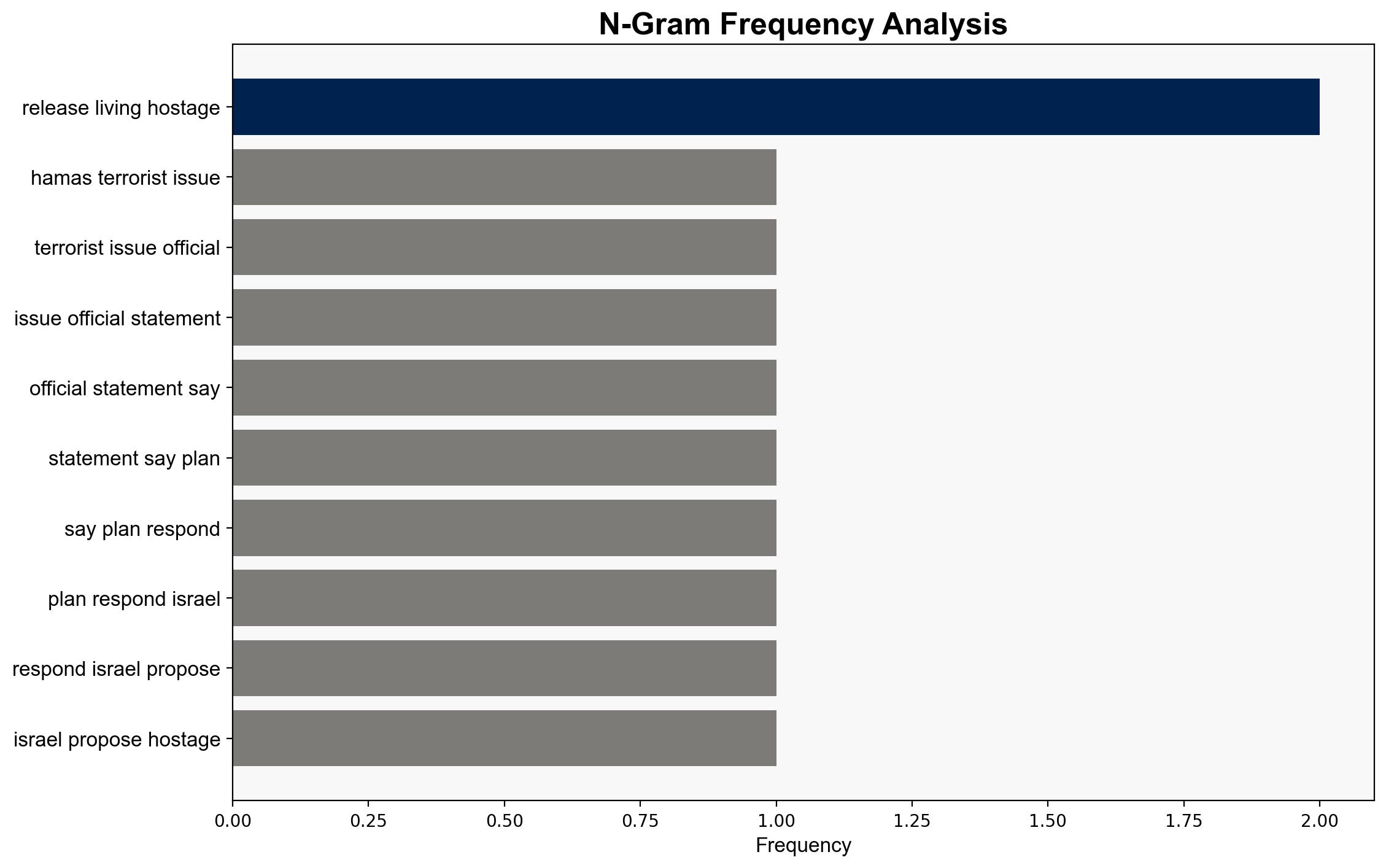Hamas ‘We’ll respond to Israeli proposal as soon as possible’ – Israelnationalnews.com
Published on: 2025-04-14
Intelligence Report: Hamas ‘We’ll respond to Israeli proposal as soon as possible’ – Israelnationalnews.com
1. BLUF (Bottom Line Up Front)
Hamas has received a proposal from Israel involving a ceasefire and hostage exchange. The organization is currently reviewing the offer and plans to respond after internal consultations. Key elements of the proposal include a 45-day ceasefire, the release of hostages, and conditions for disarmament in Gaza. The situation remains fluid, with potential implications for regional stability and humanitarian conditions.
2. Detailed Analysis
The following structured analytic techniques have been applied for this analysis:
General Analysis
The proposal from Israel to Hamas includes a 45-day ceasefire in exchange for the release of hostages. The offer is contingent upon the disarmament of Gaza, a condition that Hamas has historically resisted. The proposal also outlines a phased release of hostages and prisoners, with humanitarian aid provisions. The strategic intent behind Israel’s proposal appears to be aimed at reducing immediate hostilities while addressing humanitarian needs. However, Hamas’s insistence on maintaining its arms and ending the conflict on its terms presents significant challenges to reaching a consensus.
3. Implications and Strategic Risks
The proposed ceasefire, if accepted, could temporarily stabilize the region, allowing for humanitarian aid to reach civilians. However, the risk of non-compliance by either party remains high, potentially leading to renewed hostilities. The disarmament condition is a critical sticking point, with implications for regional power dynamics and security. Failure to reach an agreement could exacerbate humanitarian conditions in Gaza and increase tensions in neighboring regions.
4. Recommendations and Outlook
Recommendations:
- Encourage diplomatic engagement through neutral mediators to facilitate dialogue and build trust between the parties.
- Enhance monitoring mechanisms to ensure compliance with any agreed terms, particularly regarding humanitarian aid distribution.
- Consider technological solutions to improve transparency and accountability in aid delivery.
Outlook:
Best-case scenario: Both parties agree to the terms, leading to a temporary ceasefire and improved humanitarian conditions in Gaza.
Worst-case scenario: Negotiations collapse, resulting in escalated conflict and further humanitarian crises.
Most likely scenario: Prolonged negotiations with intermittent hostilities, limited progress on disarmament, and partial humanitarian aid access.
5. Key Individuals and Entities
The report mentions significant individuals and organizations involved in the negotiations and proposal. These include Hamas and Israel, with mediating countries playing a crucial role in facilitating discussions.





